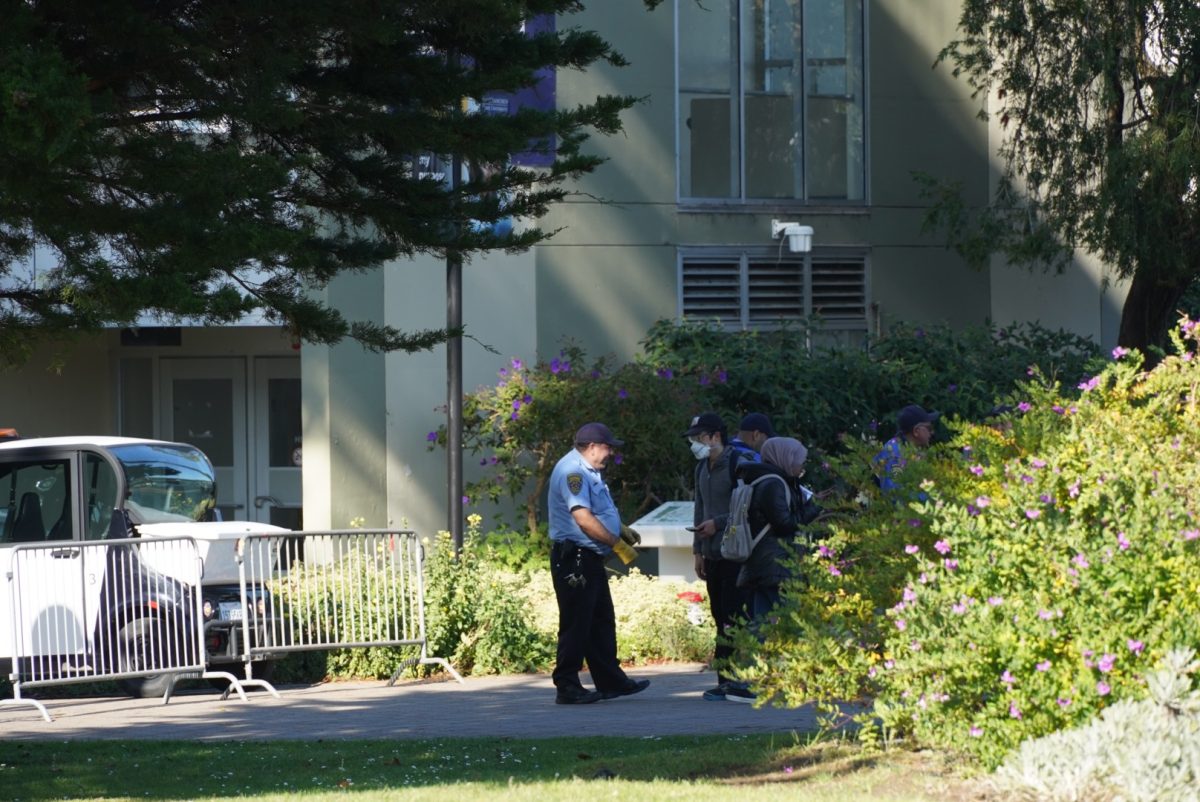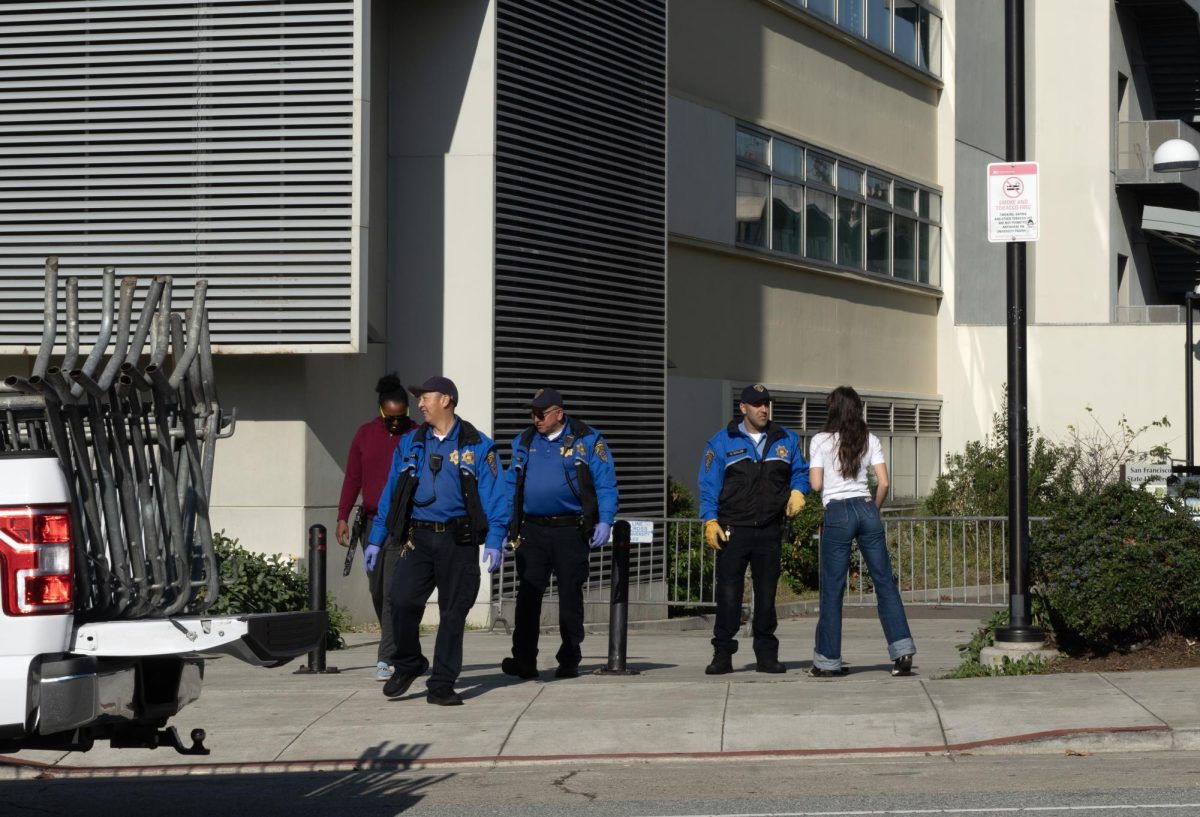From naked white men to charming sidewalk musicians to seemingly unhinged MUNI riders, there are just some characters one can’t avoid for too long while living in San Francisco. And if you stay long enough, you’ll often find that you have become one of the crazy, brazen passersby that you so often complain about.
This love-hate relationship with San Francisco is the foundation of one of the latest acclaimed movies about the city.
“The Last Black Man in San Francisco,” a new film directed and produced by Joe Talbot, tells the story of two friends, Jimmie and Mont, who search for a place to belong against the backdrop of a San Francisco that is growing less and less black. The film screened on campus Oct. 17, followed by a panel discussion with the cast and crew.
Jimmie Fails stars as himself alongside Jonathan Majors, who plays his character’s best friend, Montgomery (Mont), a gentle, observant playwright. The two spend the film trying to buy — and eventually squatting in — a multimillion dollar Victorian style home that Jimmie’s family used to own.
The film, which was five years in the making before hitting theaters, came out of years of Fails and Talbot making films together. They said this was their first feature film to be seen by the public.
“A lot of movies that we made came out of things that happened to [Jimmie] or to me or to friends of ours … and the truth is we didn’t know how movies like this were made,” Talbot said. “I dropped out of high school … but we knew we really wanted to make a film and tell the story of what was happening in San Francisco, and watching the city that we love start to disappear in some ways.”
The complex, truthful characters honor the pain of displacement, gentrification, environmental racism and the desperation for belonging without any mention of throwaway buzzwords. Jimmie and Mont are thoughtful, sensitive and wholesome while facing some of life’s most difficult dealings.
“We showed black men in a different light and how we can be all these different things, and not just the things that society, or America, the box that they put us in,” Fails said. “But I think that goes for everyone, not just black men. So I think it’s important to see the range within human beings.”
Fails spoke during the panel about the character Kofi, who wears a false tough exterior at the price of never living a true version of himself.
“He felt like he couldn’t be himself, and he had to be hypermasculine and that wasn’t even really him, so those are the consequences of that,” Fails said. “There’s a lot of people that I know, that we all know, that we lost because they felt like they had to fit into this box that the world put on black men.”
Many students who posed questions to the cast and crew after the film said they had seen the same struggles with gentrification growing up in the city, or in other communities they call home.
Ilana Fale, second year at SF State, said it was “surreal” to see a film that reflected her experience growing up in San Francisco.
“I even took my dad to see it and he was just in awe, speechless, watching it,” Fale said. “Because it’s a lot of TV shows or sitcoms that are based in San Francisco but you watch the shows and you’re like, ‘where is this at, I’ve never seen this place in the city.’”

Fale is a third generation San Francisco resident and said her grandfather has a house near Hunter’s Point, the area of a toxic soil scandal. The film makes references to years of pollution, as well as fires that destroyed rent-controlled buildings, only to be replaced by upscale developments.
“The places that they chose to shoot at, those are real places, I live by those places and growing up I wasn’t aware of the toxic waste that was by the houses that I live in, and still is to this day,” Fale said. “The people that were trying to keep that hidden from residents — there was no awareness, until now. I’m 21 years old now, I just learned about it when I was 18.”
The themes of gentrification also hold especially true to real life, Talbot said, as many of the filming locations have been torn down between the filming and release of the movie, including the Double Rock housing projects and a Tenderloin single room occupancy building.
Talbot encouraged the audience to channel frustrations about the changes in the city by voting and making their voices heard on city issues.
“If we don’t push to have the Ellis Act repealed, if we’re not pushing politicians to investigate these suspicious fires that are happening all over the city … if we don’t call on elected officials to look into the toxic waste in Hunter’s Point … then we’re not doing our job,” Talbot said.








